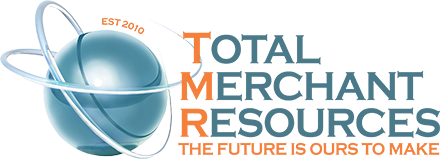
Leasing business equipment can be a smart way for companies to access the tools they need without a hefty upfront cost. Whether you’re a startup looking to preserve capital or an established business aiming to upgrade equipment regularly, leasing provides flexibility and financial ease. It allows businesses to keep up with the latest technology and reduce the risk associated with owning depreciating assets.
Leasing involves an agreement where the business rents equipment for a certain period. This setup can offer several advantages, such as lower payments compared to buying and the option to upgrade equipment more frequently. It’s an appealing strategy for businesses that require high-tech or rapidly evolving tools that might quickly become outdated.
Knowing how to navigate equipment leasing can make a significant difference. Making informed decisions about what equipment to lease, understanding lease terms, and managing leased assets effectively will all contribute to successful financial planning. By exploring these facets, businesses can make the most of their leasing agreements and ensure they are getting the best value for their investment.
Understanding Equipment Leasing Basics
Equipment leasing is a smart choice for businesses that need tools but want to avoid high upfront costs. Leasing works much like renting. It allows you to use essential equipment without buying it outright. You enter an agreement with a leasing company to use the equipment for a specific period. Once the lease ends, you often have options such as returning the equipment, buying it, or renewing the lease.
Leasing equipment comes with several benefits. First, it helps preserve cash by reducing large initial expenses. This allows businesses to allocate their funds to other critical areas. Leasing also offers flexibility, as it often requires lower payments than purchasing outright. Plus, it allows businesses to maintain up-to-date equipment by upgrading to the latest models when leases expire. This is particularly valuable in sectors like technology, where equipment can become outdated quickly.
Various types of equipment are available for lease, catering to different industries and business sizes. These can include office equipment like copiers and computers, industrial machinery, vehicles, and even specialized tools for healthcare and construction. Leasing offers an opportunity to acquire high-quality equipment that might otherwise be financially out of reach. It provides an efficient pathway to access the tools necessary for business operations without the burden of ownership.
Evaluating Your Business Needs
Determining what equipment your business requires is the first step in leasing. Start by asking these key questions:
– What equipment is essential for day-to-day operations?
– Will this equipment help improve productivity or efficiency?
– How long will the equipment be needed to achieve business goals?
– Is the equipment likely to need upgrading in the near future?
Evaluating the cost-benefit of leasing specific equipment is crucial. Consider how the leased equipment will impact your business financially and operationally. Calculate potential revenue or savings from using leased equipment compared to purchasing or using inferior tools. This assessment helps determine if leasing offers clear value.
Choosing between short-term and long-term leases depends on your business goals and needs. Short-term leases can be ideal for projects that require specific equipment temporarily, while long-term leases may be more cost-effective for tools used consistently over time. Consider the flexibility each option provides and align it with your business’s strategic plans.
By thoroughly evaluating your needs and understanding the benefits of leasing, businesses can make informed decisions. This approach ensures that the choice to lease aligns with operational demands and financial strategies.
Negotiating Lease Terms
When leasing equipment, negotiating favorable terms is essential for getting the best deal. Start by understanding what you need from the lease and what the provider offers. Here are some tips for favorable negotiations:
– Research and Compare: Before negotiations, gather offers from multiple leasing companies. This knowledge gives you leverage to negotiate better terms.
– Define Lease Duration: Decide on the ideal length of the lease. Short-term leases offer flexibility, while long-term leases might get you a better rate. Evaluate what suits your business needs.
– Negotiate Payments: Discuss payment schedules and any potential penalties for late payments. Understanding these details helps in avoiding surprises later.
– Understand End-of-Lease Options: Discuss options at lease end, like buying the equipment, renewing the lease, or returning the equipment. Knowing these choices lets you plan accordingly.
Key components of a lease agreement need careful review:
– Payment Terms: Look for details about the payment frequency and penalties for late payments.
– Maintenance Responsibilities: Clarify which party is responsible for regular maintenance and repairs.
Avoid common pitfalls, like hidden fees or unclear lease terms, by thoroughly reading the agreement. Clarify anything you don’t understand before signing to avoid future complications. Taking time at this stage ensures a lease agreement that benefits your business.
Maintaining Leased Equipment
Keeping leased equipment in excellent condition is crucial for getting the most out of your lease. Proper maintenance ensures efficiency and longevity. Follow these strategies:
– Follow Manufacturer Guidelines: Adhere to recommended maintenance schedules. This helps prevent issues and extends the life of the equipment.
– Regular Inspections: Schedule regular checks to spot potential problems early. Fixing small issues prevents bigger, costly repairs.
– Proper Usage: Train employees on the correct use of equipment. Misuse can lead to damage, higher costs, or even end the lease contract prematurely.
Maintenance responsibilities are typically shared between the lessee and lessor. Usually, routine maintenance falls to the lessee, while major repairs are the lessor’s responsibility. Knowing this division ensures each party adheres to their obligations, minimizing conflicts.
Keeping thorough maintenance records adds significant advantages. Detailed logs offer insight into equipment history, helping in resale or buyout decisions. They also protect you legally by showing adherence to maintenance obligations, reducing liability for defects or failures.
Conclusion
Leasing business equipment offers numerous advantages, including cost savings and access to the latest technology. By understanding the routes to favorable lease terms and establishing a reliable maintenance routine, businesses can maximize their investment in leased equipment. Careful planning and attention to detail help avoid common leasing pitfalls, ensuring your operations run smoothly and efficiently.
Exploring leasing options with a trusted partner is beneficial. With expertise like that provided by Total Merchant Resources, your business can secure the right equipment while focusing on growth and success. Reach out to us and discover fast business loans onlinethat meet your business needs and accelerate your future growth.



